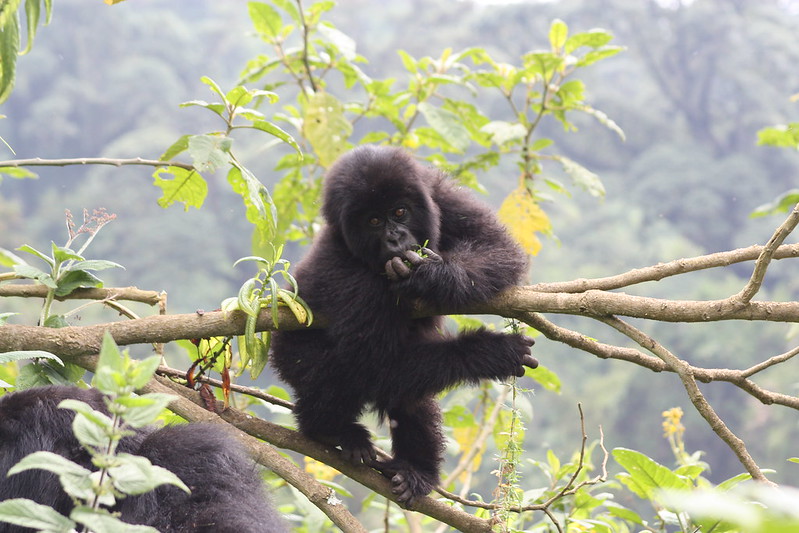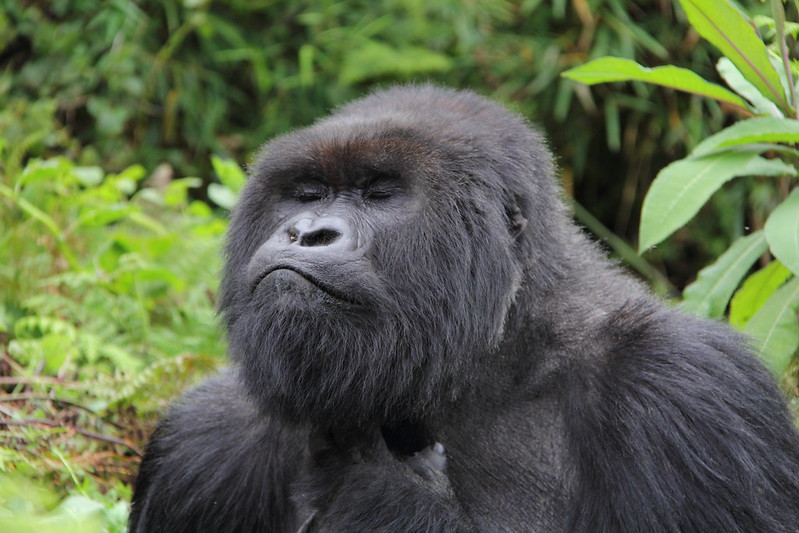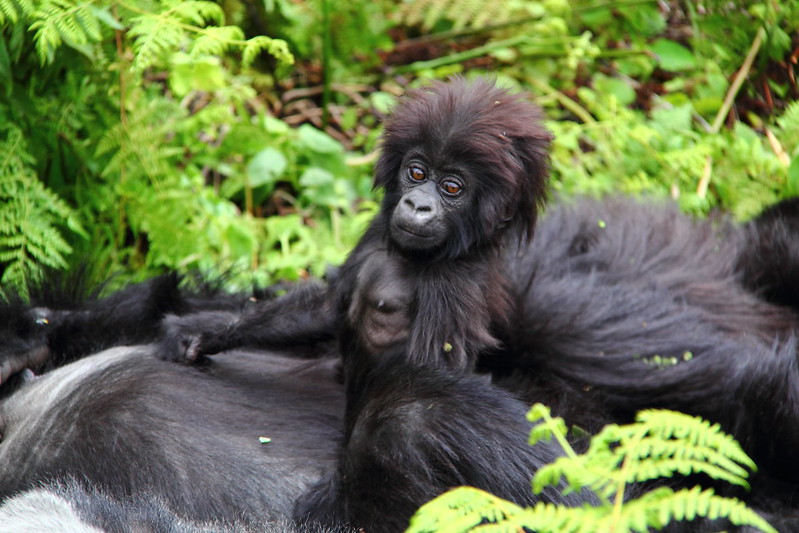Uganda Bwindi Gorilla trekking. The bwindi gorilla walk in Uganda is a once-in-a-lifetime opportunity to…
What Is a Gorilla Trek?
What Is a Gorilla Trek?
Gorilla trekking is an extraordinary wildlife experience that allows you to observe one of Earth’s most fascinating and endangered creatures—gorillas—in their natural habitat. This immersive adventure takes you deep into the jungles of Africa, where you’ll track and observe wild gorillas in their dense, lush forests. The experience is not only exhilarating but also profoundly educational, providing insight into the lives and behaviors of these majestic apes.
In this article, we will explore what a gorilla trek is, the destinations where you can embark on one, the preparation involved, and why it has become one of the most sought-after wildlife adventures in the world. We’ll also highlight the significance of gorilla trekking in conservation efforts and how it helps to protect these incredible animals.
What is Gorilla Trekking?
Gorilla trekking is a wildlife adventure that involves hiking through the dense forests and jungles of Africa to find and observe wild gorillas. The trek typically takes place in protected areas, such as national parks, where gorillas live freely in the wild. These treks are guided by experienced rangers who know the gorilla groups’ whereabouts and are trained to ensure both the safety of the trekkers and the gorillas.
Once you locate a group of gorillas, you will spend a limited amount of time observing them, respecting the gorillas’ space, and allowing them to go about their natural behaviors. Trekking usually lasts between 2 to 8 hours, depending on the location of the gorillas and the difficulty of the terrain.
The goal of a gorilla trek is to provide an opportunity to experience these magnificent creatures up close while ensuring their protection and well-being. It’s a unique blend of adventure, education, and conservation, making it an unforgettable experience.
The Best Destinations for Gorilla Trekking
Gorilla trekking is offered in two main countries: Uganda and Rwanda, as well as a smaller population in the Democratic Republic of the Congo (DRC). Each destination offers a unique experience, but all provide access to some of the last remaining populations of mountain gorillas, which are critically endangered.
1. Uganda – Bwindi Impenetrable National Park and Mgahinga Gorilla National Park
Uganda is one of the most popular destinations for gorilla trekking, and it is home to half of the world’s remaining mountain gorillas. The most famous trek in Uganda takes place in Bwindi Impenetrable National Park, a UNESCO World Heritage site that is known for its dense, misty rainforests and diverse wildlife. The park has several habituated gorilla families that trekkers can visit.
In addition to Bwindi, Mgahinga Gorilla National Park in southwestern Uganda offers another fantastic option for gorilla trekking. This park is smaller and less crowded than Bwindi, but it is still home to gorillas and offers stunning views of the Virunga Volcanoes.
2. Rwanda – Volcanoes National Park
Rwanda is another top destination for gorilla trekking, particularly in Volcanoes National Park. This park, located in the northwestern part of the country near the borders of Uganda and the Democratic Republic of the Congo, is home to several habituated gorilla families. Rwanda is often chosen by trekkers for its well-developed infrastructure and shorter treks compared to Uganda, making it a convenient choice for travelers.
3. Democratic Republic of the Congo – Virunga National Park
The Virunga National Park in the DRC is also home to mountain gorillas, although trekking in this region is less common due to the political instability and safety concerns. However, for adventurous travelers seeking a truly remote and raw experience, Virunga offers the opportunity to track gorillas in a less commercialized setting.
How Does a Gorilla Trek Work?
A gorilla trek is usually a full-day activity, though it may vary depending on the location and trekking conditions. Here is an overview of what you can expect when embarking on a gorilla trekking adventure.![]()
1. Pre-Trek Briefing
Before the trek begins, you will attend a pre-trek briefing with your guide. The briefing will include essential information about the gorilla trek, including safety precautions, how to behave around the gorillas, and the importance of respecting their space. You will also learn about the gorillas you may encounter, including their habits and family structure.
2. Start of the Trek
After the briefing, you will set off with your group and a guide, walking through the dense jungle or forest in search of the gorillas. The terrain can be quite challenging, with muddy paths, thick vegetation, and sometimes steep climbs. Rangers will lead you, and their expert knowledge of the gorillas’ movements and the forest’s terrain will help ensure a successful trek.
3. Tracking the Gorillas
The tracking process can take several hours, depending on where the gorillas are located on the day of the trek. The guides and rangers typically use their knowledge of the gorillas’ movements and signs in the forest, such as broken branches or fresh footprints, to locate the group. Sometimes, you may need to hike for hours, and the trek can be physically demanding. However, once you get close to the gorillas, the journey becomes incredibly rewarding.
4. Encountering the Gorillas
Once you find the gorillas, you’ll have a limited amount of time to observe them. This period is usually between 1 to 1.5 hours, as visitors are encouraged to minimize their impact on the gorillas’ daily life. During this time, you’ll observe their behavior, such as feeding, grooming, or playing. It is a truly magical moment when you are within arm’s reach of these gentle giants.
You’ll also have the opportunity to see the social dynamics of the group. In a typical gorilla family, there is a dominant silverback male, females, and their offspring. The silverback is the leader and protector of the group, and it’s fascinating to watch his interactions with the other members.
5. Returning to the Base
After spending time with the gorillas, you’ll return to the starting point of the trek. This can take anywhere from 30 minutes to a few hours, depending on how far you are from the base camp.
What to Expect on a Gorilla Trek
1. Physical Effort
Gorilla trekking can be physically demanding. While the trek itself is not a full-blown mountain climb, the terrain can be steep, muddy, and uneven, which may require stamina and physical endurance. You should be prepared for a challenging hike, especially if you are trekking in dense forests or rainforests where paths are not well-defined.
However, gorilla trekking is accessible to most people, and a reasonable level of fitness is usually enough to enjoy the experience. For those who are less physically fit or have mobility concerns, it’s worth checking with the trekking operator ahead of time to see if there are easier routes or additional assistance available.
2. The Weather
The weather can vary depending on the region and time of year. In Uganda and Rwanda, it’s a tropical climate, so expect high humidity and the potential for rain, even during the dry season. Make sure to bring appropriate clothing and gear, including sturdy hiking boots, waterproof jackets, and long-sleeved shirts to protect from insects and thorns.
3. Limited Group Size
Gorilla trekking is an exclusive experience. Only a limited number of permits are issued each day, ensuring that the groups of gorillas are not overwhelmed by human interaction. Groups are usually limited to around 8 trekkers per group, which helps preserve the gorillas’ natural behavior and minimizes the impact of human presence.
Why Is Gorilla Trekking Important?
Conservation Efforts
Gorilla trekking plays a significant role in the conservation of gorillas, particularly mountain gorillas, which are critically endangered. The funds generated from trekking permits go directly to the national parks and conservation programs that help protect gorillas and their habitats. These funds support anti-poaching efforts, habitat restoration, and the monitoring of gorilla health.
Additionally, the tourism industry created by gorilla trekking provides local communities with jobs and a sustainable way of benefiting from the preservation of wildlife. This, in turn, encourages local populations to protect gorillas rather than seeing them as a threat or resource to be exploited.
Scientific Research
Gorilla trekking also contributes to scientific research. Researchers and conservationists track gorilla populations, monitor their health, and study their behaviors, which is critical to ensuring the species’ long-term survival.
A gorilla trek is much more than a wildlife encounter—it’s an immersive, once-in-a-lifetime experience that allows you to connect with one of the most intelligent and endangered creatures on the planet. Whether you choose to trek in Uganda, Rwanda, or the DRC, the opportunity to observe gorillas in their natural habitat offers a profound sense of awe and appreciation for these magnificent animals.
Not only does gorilla trekking provide an unforgettable adventure, but it also plays a crucial role in conservation efforts, helping to protect gorillas and their habitats for future generations. If you’re considering a gorilla trek, be prepared for a challenging but rewarding adventure that will leave you with memories that will last a lifetime.


